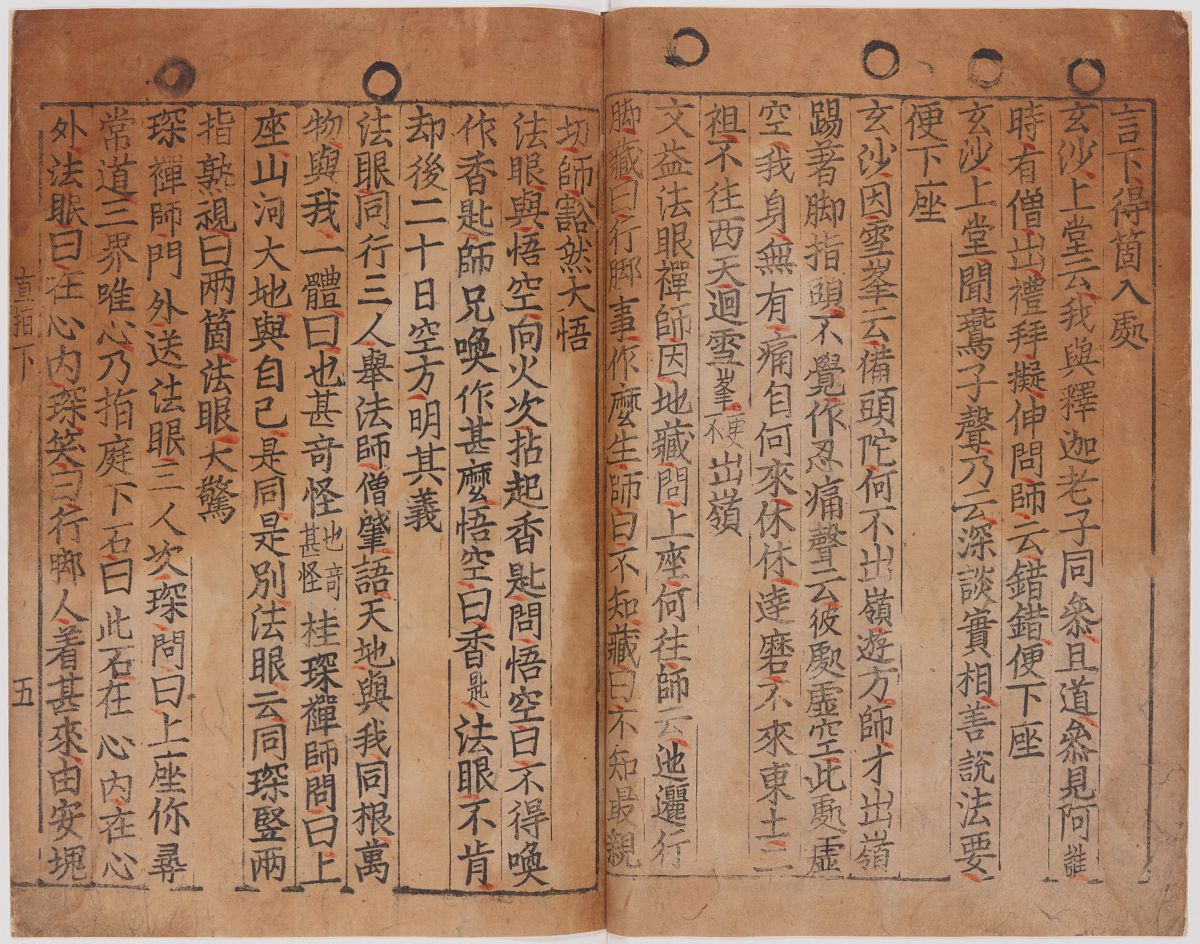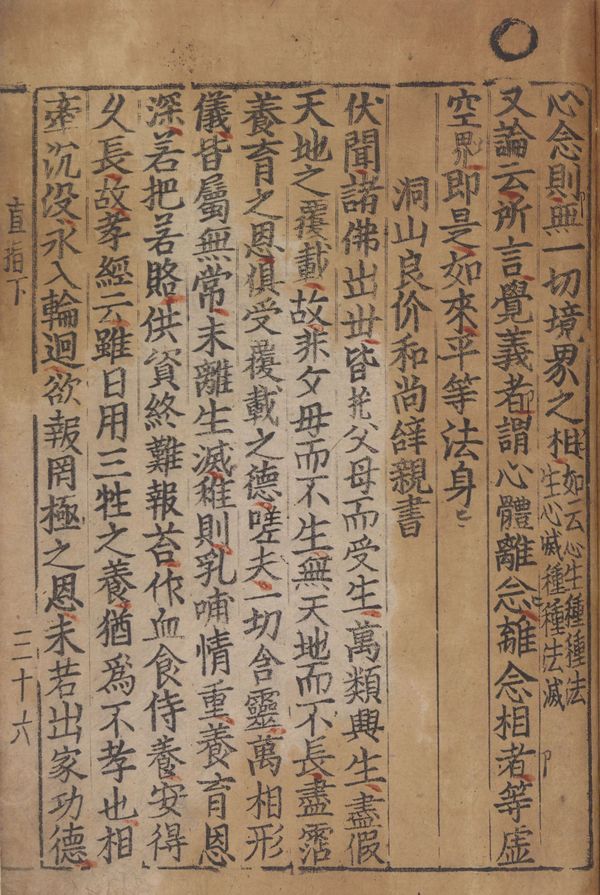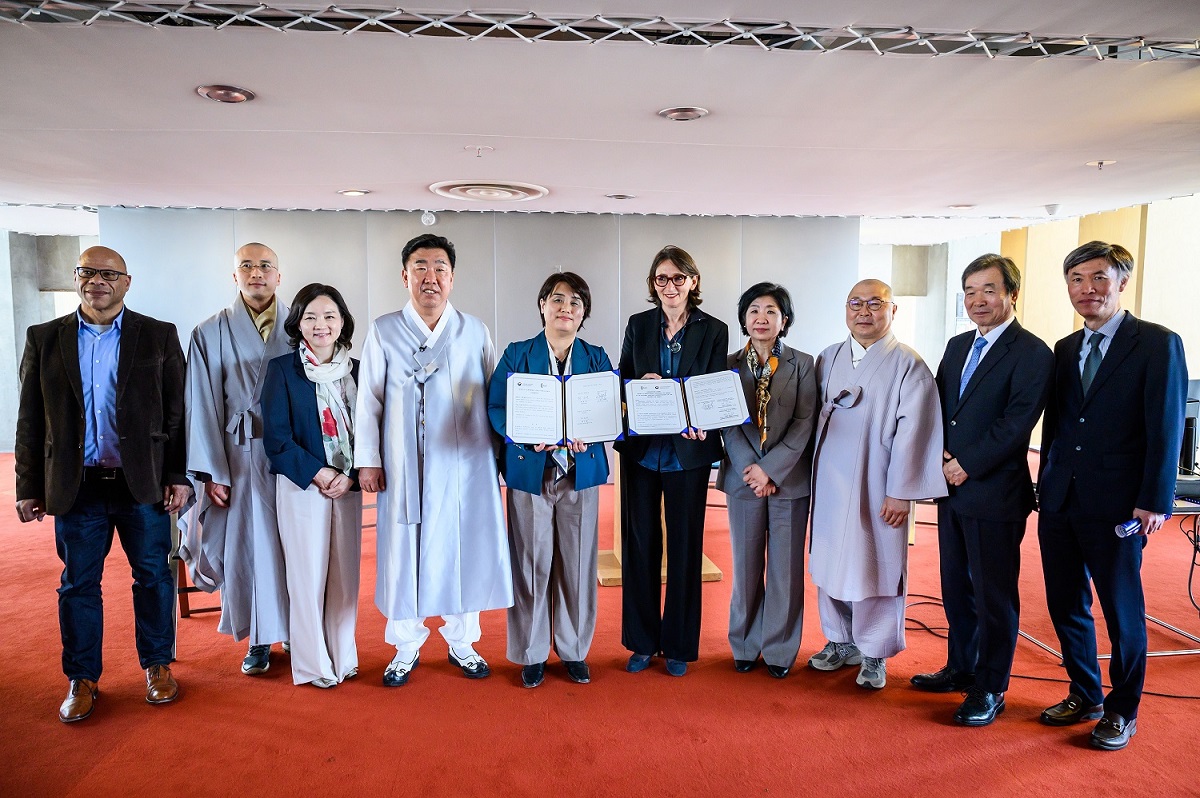“Jikji”, a treasure of the world of printing
Jikji is the oldest known book in the world printed with movable metal type. It was printed in 1377 in what is now the city of Cheongju (Republic of Korea), 78 years before the Gutenberg Bible.
What is Jikji?
Jikji is a Buddhist work, whose full title is Baegun hwasang chorok buljo jikji simche yojeol, which translates as Anthology of Great Buddhist Priests’ Zen Teachings. A xylograph version of the complete text of Jikji dated from 1378, from the monastery of Ch’wi’am, is preserved in Korea. The copy preserved at the BnF corresponds to the second volume of the text.
Written by the monk Baegun Hwasang and his disciples, Seokcan and Daldam, it contains the essential elements of Zen Buddhism, taken from various works such as the Gyeongdeok jeondeungnok and the Seonmun yeomsong. It explores themes that allow everyone to access the essence of Zen and has been used in the context of teaching students of this doctrine. It is still considered a major text by the Jogye Order of South Korean Buddhism.
A treasure of humanity
Dating from 1377, Jikji was printed in the Heungdeok-sa temple in Cheongju, using movable, cast metal characters. It is considered by the international community, including UNESCO, to be the oldest known document printed using this process. Jikji is also listed as one of South Korea’s national treasures (classification no. 1132 in 1992) and has been included in the Memory of the World Register since 4 September 2001.
From Korea to France
French Consul to Seoul during the reign of King Gojong (1863-1907), Victor Collin de Plancy acquired several hundred ancient Korean books, including Jikji, and brought them back to France. Jikji remained his property until 1911, when it was sold to the collector Henri Vever, who bequeathed it to the Bibliothèque nationale in 1950. The book entered the collections in 1952.
Jikji at the BnF
Preservation and access
Kept at the BnF under the reference Coréen 109 in the “Grande Réserve” of the Manuscripts Department, it is one of the most precious items in the collections and is treated accordingly. Every effort is made to keep its handling and movement to a minimum. It is only made available with reasoned opinion and authorisation of the Department’s director.
Online access
Jikji is referenced in the general catalogue and in the BnF’s Archives and Manuscripts Database. The title of the document is given in French, in Korean (hangul), as well as in Chinese characters (hanja) with a transliteration in Latin characters.
To facilitate access to this document for as many people as possible, Jikji can be consulted online on Gallica.
All these digitisations of Jikji can be consulted and downloaded free of charge. It is also possible to zoom in on the document and download it in jpeg or pdf format.
Presentations to the public
For reasons of conservation and preservation, Jikji has rarely been presented to the public.
At the 1900 Universal Exhibition in Paris, it was presented and made accessible to the general public for the first time in Europe, in the Korean pavilion alongside various objects and the Collin de Plancy collection.
It was not until 1972 that it was once again put on display during the “International Book Year”, when it was recognised in the West as the oldest existing book printed with movable metal type. The following year, Jikji was presented alongside the rarest and most precious manuscripts of the Bibliothèque nationale at the exhibition Trésors d’Orient (Treasures of the Orient).
In 2023, the exhibition Imprimer ! L’Europe de Gutenberg (Printing! Gutenberg’s Europe) is an opportunity for the BnF to present, simultaneously for the first time, exceptional pieces from its collections: the Bois Protat (France or southern Germany, circa 1400), the oldest known Western woodcut; Jikji; and the Gutenberg Bible (Germany, circa 1455), the first European letterpress.
More information on the exhibition Imprimer ! L’Europe de Gutenberg
Science at the service of this treasure
The BnF has always promoted a policy of openness and scientific cooperation around Jikji. Korean librarians and international researchers are working together to unravel the many mysteries that still surround this document.
Among the most recent collaborations, there is one with the Cheongju Early Printing Museum, Chungbuk National University and the French Conservation Research Centre (CNRS-MNHN-French Ministry of Culture) to carry out physico-chemical analyses on Jikji (2021-2024).
On 11th of April 2023, the BnF and the Cultural Heritage Administration of the Republic of Korea signed a three-year cooperation agreement aimed at strengthening the scientific cooperation around the Korean collections of the BnF.
The facilitation of the Korean public to the exhibition «Printing! Gutenberg’s Europe», notably through online resources in Korean as well as the joint organisation of conferences related to Jikji, are among the first actions carried out under this agreement.
The BnF also works together with the Overseas Korean Cultural Heritage Foundation, an entity affiliated with the Cultural Heritage Administration, to implement cooperation actions around the exhibition.





